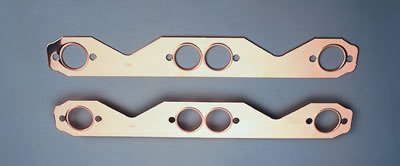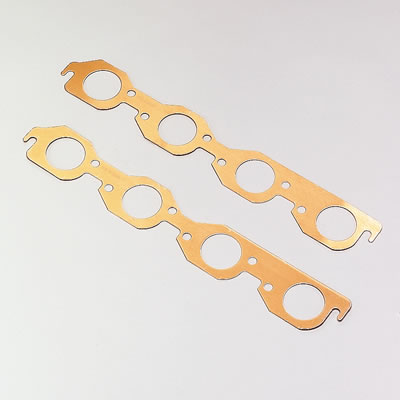face it, many, maybe, most muffler shops want you in and out of thier bays as fast as possiable and want to use the least expensive components they can find , and want to take the least effort and time they can, yet derive the most proffit, from the work. you can totally avoid that by either buying top quality components and paying big bucks, or...if your budgets like mine....
if something BREAKS , well,thats a P.I.T.A., and probably a badly designed or improperly installed component, but thats what WELDERS are designed for.....learn to weld and things like that are at most a minor repair that will usually take well under 30 minutes and its almost certain that you can put some thought into the repair and make it darn near "bullet proof"
and very unlikely to re-occure
no part is immune from a bad installation.
in fact! once you learn to weld and you can weld up a totally custom exhaust that will exactly match your design and application goals for far less than you can buy one for, in cheap aluminized steel or the far better stainless steel
http://store.summitracing.com/egnse...+kit&searchinresults=false&N=700+115&y=6&x=32
http://www.mandrelbendingsolutions.com/ ... 3&total=31
http://www.jegs.com/webapp/wcs/stores/servlet/category_10001_10002_11525_-1_10245
http://www.magnaflow.com/02product/universalsatinxl.asp
http://www.flowmastermufflers.com/mufflers.html
http://www.porcupinepress.com/_bending/segmentbends.htm
http://www.borla.com/products/universal.aspx
http://www.superchevy.com/technical/eng ... index.html
you can build your own stainless steel exhaust system and personally install it and its very unlikely to cost nearly what youll pay a muffler shop, and if you shop for components carefully youll find that a stainless exhaust will cost only slightly more than the muffler shop charges for inferior aluminized steel
if yourgoing thru the work do it correctly, buy and install decent components so your not back doing it again in a year or so!
careful measurement and planing, and component sellection, will help a great deal in keeping costs low!
BUT THEN I ONLY BUY AND INSTALL STAINLESS COMPONENTS IF GIVEN AN OPTION, INSTALL THEM MYSELF, AND CAN,T REMEMBER HAVING PROBLEMS INSTALLING OR HAVING A COMPONENT FAIL IF ITS PROPERLY INSTALLED...QUALITY EXHAUST HANGERS DON,T GENERALLY FAIL AND QUALITY WELDS DON,T GENERALLY BREAK, AND IF YOU INSTALL IN CORRECTLY YOURSELF AND CAN WELD YOULL SAVE MONEY AND HAVE THE EQUIPMENT AND SKILL TO FIX IT IN THE UNLIKELY EVENT IT DID BREAK
JUST ONE MORE REASON TO LEARN TO WELD AND HAVE ACCESS TO A GOOD MIG,TIG, OR OXY-ACETOLENE TORCH

if something BREAKS , well,thats a P.I.T.A., and probably a badly designed or improperly installed component, but thats what WELDERS are designed for.....learn to weld and things like that are at most a minor repair that will usually take well under 30 minutes and its almost certain that you can put some thought into the repair and make it darn near "bullet proof"
and very unlikely to re-occure
no part is immune from a bad installation.
in fact! once you learn to weld and you can weld up a totally custom exhaust that will exactly match your design and application goals for far less than you can buy one for, in cheap aluminized steel or the far better stainless steel
http://store.summitracing.com/egnse...+kit&searchinresults=false&N=700+115&y=6&x=32
http://www.mandrelbendingsolutions.com/ ... 3&total=31
http://www.jegs.com/webapp/wcs/stores/servlet/category_10001_10002_11525_-1_10245
http://www.magnaflow.com/02product/universalsatinxl.asp
http://www.flowmastermufflers.com/mufflers.html
http://www.porcupinepress.com/_bending/segmentbends.htm
http://www.borla.com/products/universal.aspx
http://www.superchevy.com/technical/eng ... index.html
you can build your own stainless steel exhaust system and personally install it and its very unlikely to cost nearly what youll pay a muffler shop, and if you shop for components carefully youll find that a stainless exhaust will cost only slightly more than the muffler shop charges for inferior aluminized steel
if yourgoing thru the work do it correctly, buy and install decent components so your not back doing it again in a year or so!
careful measurement and planing, and component sellection, will help a great deal in keeping costs low!
BUT THEN I ONLY BUY AND INSTALL STAINLESS COMPONENTS IF GIVEN AN OPTION, INSTALL THEM MYSELF, AND CAN,T REMEMBER HAVING PROBLEMS INSTALLING OR HAVING A COMPONENT FAIL IF ITS PROPERLY INSTALLED...QUALITY EXHAUST HANGERS DON,T GENERALLY FAIL AND QUALITY WELDS DON,T GENERALLY BREAK, AND IF YOU INSTALL IN CORRECTLY YOURSELF AND CAN WELD YOULL SAVE MONEY AND HAVE THE EQUIPMENT AND SKILL TO FIX IT IN THE UNLIKELY EVENT IT DID BREAK
JUST ONE MORE REASON TO LEARN TO WELD AND HAVE ACCESS TO A GOOD MIG,TIG, OR OXY-ACETOLENE TORCH


